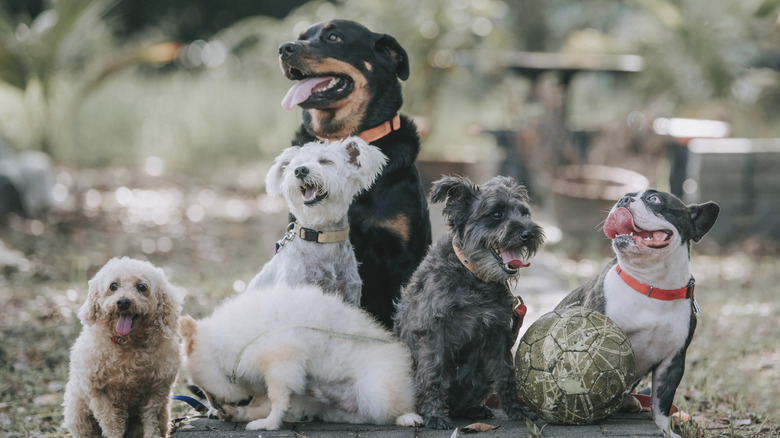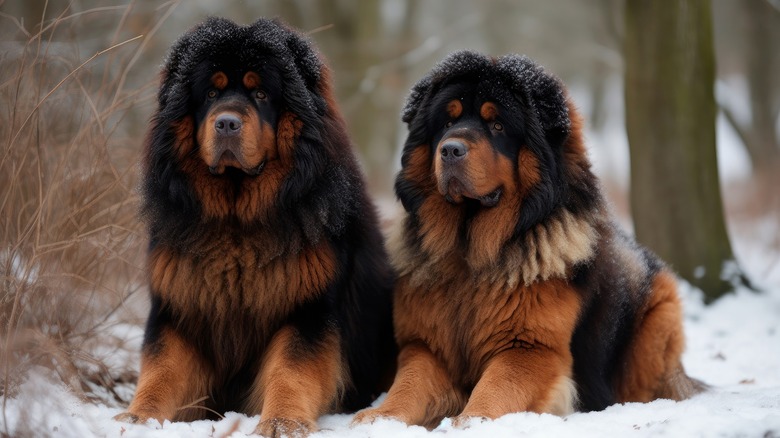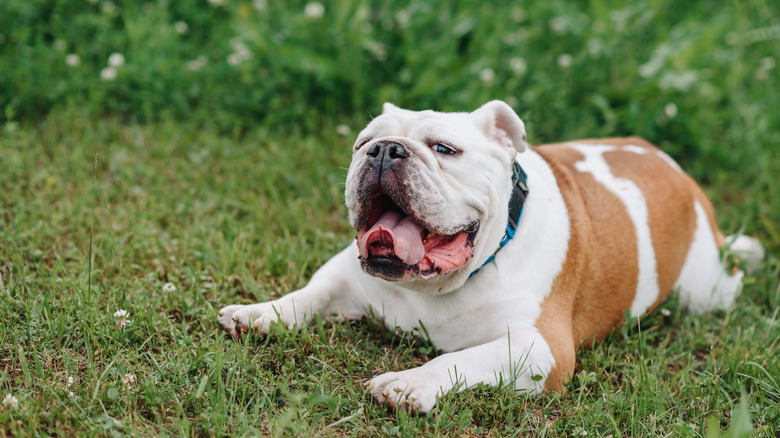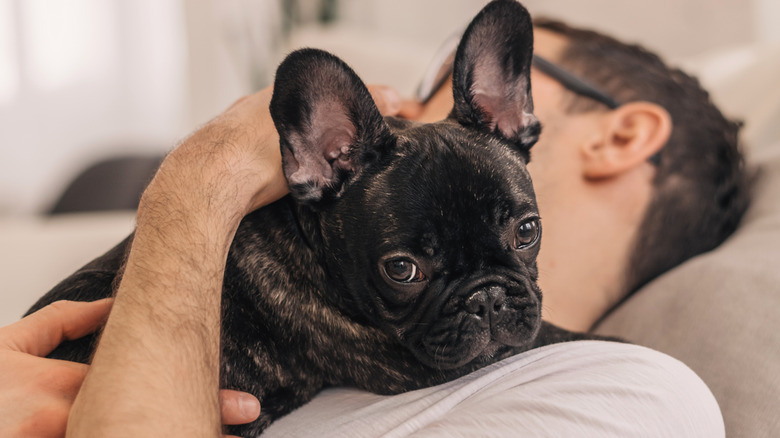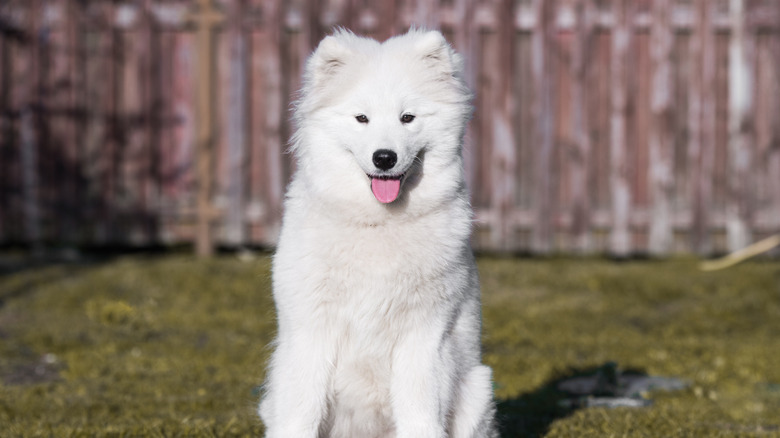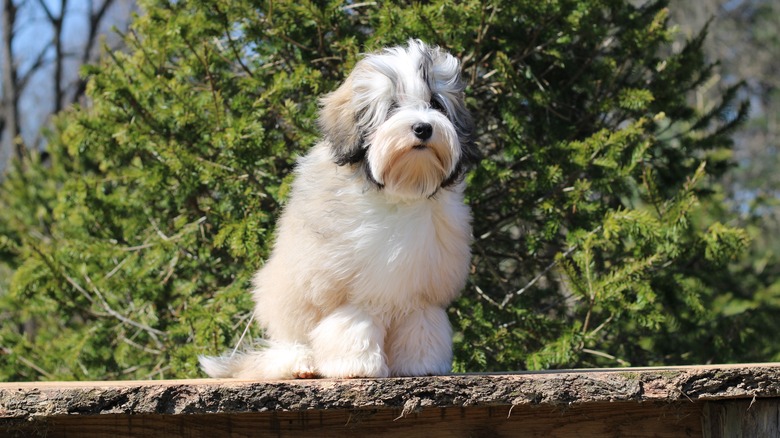The 5 Most Expensive Dog Breeds In The World
Owning a dog comes with significant financial commitments, particularly for some of the world's most expensive breeds. These costs can be influenced by various factors, including adoption or breeder fees, which, depending on the breed, and purebred status, can run north of $4,000. Popular breeds in high demand often have premium prices that reflect their desirability. Those who have a history of winning at award competitions, for instance, may come at a higher ticket than those who do not.
Other breeds cost more money based on specific health needs. Larger breeds often require more expensive diagnostic tests and care. Dogs from poor breeding may have hereditary health issues, leading to costly medical needs. Working breeds need extensive training to stay mentally stimulated, adding to expenses. Some breeds are prone to hereditary conditions requiring surgery, and large dogs with high grooming needs further increase costs. Knowing how to read a dog's pedigree can help you better understand why those prices exists.
And your puppy budget doesn't necessarily end there: Aside from what Halloween costume you may want to fit your dog with, significant optional costs may come into play, such as pet insurance and training classes. Understanding the financial impact of these breeds can help you plan for the lifelong care of your pets. However, there are certain luxury breeds that are guaranteed to cost a premium price, no matter how frugal you are.
Mastiff appeal
The Tibetan mastiff is widely regarded as the most expensive dog breed in the world, with prices that can reach millions of dollars. This extraordinary cost is driven by several key factors, including the breed's rarity, especially outside of its native regions, and its status symbol among the wealthy elite, particularly in China. One of the most notable examples of its value occurred in 2014, when a Tibetan mastiff puppy was sold to a Chinese businessman for a staggering $1.95 million, setting a world record.
Beyond its rarity, the Tibetan mastiff's lion-like appearance and the challenges associated with breeding contribute to its high price. Breeding these dogs is difficult, often resulting in small litters, which increases their exclusivity and value. Additionally, their large size demands significant maintenance, from grooming to food expenses, making ownership a costly long-term commitment.
The price of healthy and well-tempered Tibetan mastiffs can vary widely, from around $2,000 for a standard puppy to the extraordinary sums seen in elite circles. Breeders with a reputation for producing healthy, well-bred dogs and those with champion pedigrees also contribute to the high price tag.
Bullish on English bulldogs
The English bulldog is known for its charming, low-key demeanor and its distinct wrinkled old-man face, making it a popular and beloved breed. However, owning one comes with significant financial commitments due to their predisposition to various health problems. On average, an English bulldog costs around $4,250, but costs can increase substantially when factoring in veterinary care.
Their brachycephalic (flat-faced) structure can lead to serious breathing difficulties, often requiring costly interventions. Additionally, English bulldogs are prone to hip dysplasia, which may necessitate surgery or ongoing medication. These health concerns, along with the reputation of the breeder and potential basic training services, contribute to the high cost of owning an English bulldog. Despite these expenses, their popularity continues to grow, especially after a bulldog named Thor won "Best in Show" at the 2019 National Dog Show.
Fancy French bulldogs
French bulldogs are consistently ranked among the more expensive dog breeds, with prices often exceeding $3,000 from reputable breeders. In 2024, NPR reported that this was due to surges in the breeds popularity further driving up their cost. Known for their playful, affectionate personalities and quiet demeanor — often limited to snorts and snores — French bulldogs have become beloved companions, particularly for families with children.
However, like their English bulldog counterparts, French bulldogs are prone to several health issues that can lead to significant veterinary expenses. Their brachycephalic features often result in breathing difficulties, requiring costly interventions. Additionally, they are susceptible to hip dysplasia, a condition that may require expensive surgery and ongoing care. These factors impact the French Bulldog's average life span.
While their grooming needs are relatively low, their wrinkles need regular cleaning to avoid skin problems, adding to the cost of ownership. Despite these concerns, their endearing temperament makes them a highly sought-after breed.
The smiling Samoyed
The Samoyed is a strikingly beautiful and cheerful breed, often recognized for its signature bright "smiling" face. However, owning one comes with a hefty price tag. Typically costing between $2,000 and $5,000, Samoyeds rank among the priciest dog breeds. Their rarity, coupled with increasing popularity, drives demand and prices even higher. Breeding challenges, such as small litter sizes, add to the limited availability of Samoyed puppies and increase their prices.
Samoyeds are also prone to hereditary eye problems and hip dysplasia, leading to potentially significant veterinary expenses throughout their lives. Their thick double coat requires extensive grooming, which can be costly, especially for owners who opt for professional services. Despite these expenses, Samoyeds are adored for their friendly temperament and are known to be affectionate with people of all ages. However, they require ample exercise and mental stimulation to prevent boredom, making them a demanding yet rewarding companion for dedicated owners.
Little lion Löwchen
The Löwchen, a type of Maltese dog, is known for its lion-like appearance and cheerful temperament. One of the most expensive dog breeds in the world, their adoption prices range from $4,000 to $8,000. That hefty price point is due to their rarity.
In the 1970s, only 65 known Löwchens remained globally. This vulnerability, coupled with their long European heritage, significantly contributes to their high cost and desirability among enthusiasts. According to CNN, in 1976, one Löwchen sold for what would be the modern day equivalent of $53,000 U.S. dollars.
In addition to their rarity, Löwchens require regular grooming to maintain their distinctive look. Their non-shedding coat demands frequent brushing and monthly trims. Over time, such maintenance expenses can add up. Despite these costs, Löwchens are known for their good health and longevity, making them a valuable companion for families. Their playful, yet calm demeanor makes them excellent pets, especially around children. Prospective owners should carefully consider the financial commitment involved, particularly for grooming, when choosing to bring home this rare and historically significant breed.
